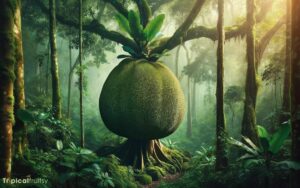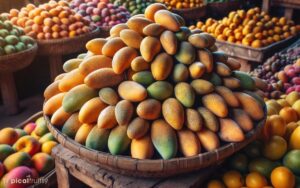Is Mango a Tropical Fruit? Yes!
Yes, the mango (Mangifera indica) is indeed a tropical fruit. It is native to South Asia and is widely cultivated in tropical and subtropical regions worldwide, where it is cherished for its sweet flavor and cultural significance.
Mangoes are a classic example of tropical fruits due to several reasons:
Mangoes epitomize tropical delight, thriving in warm climates and enriching cultures with their luscious taste.
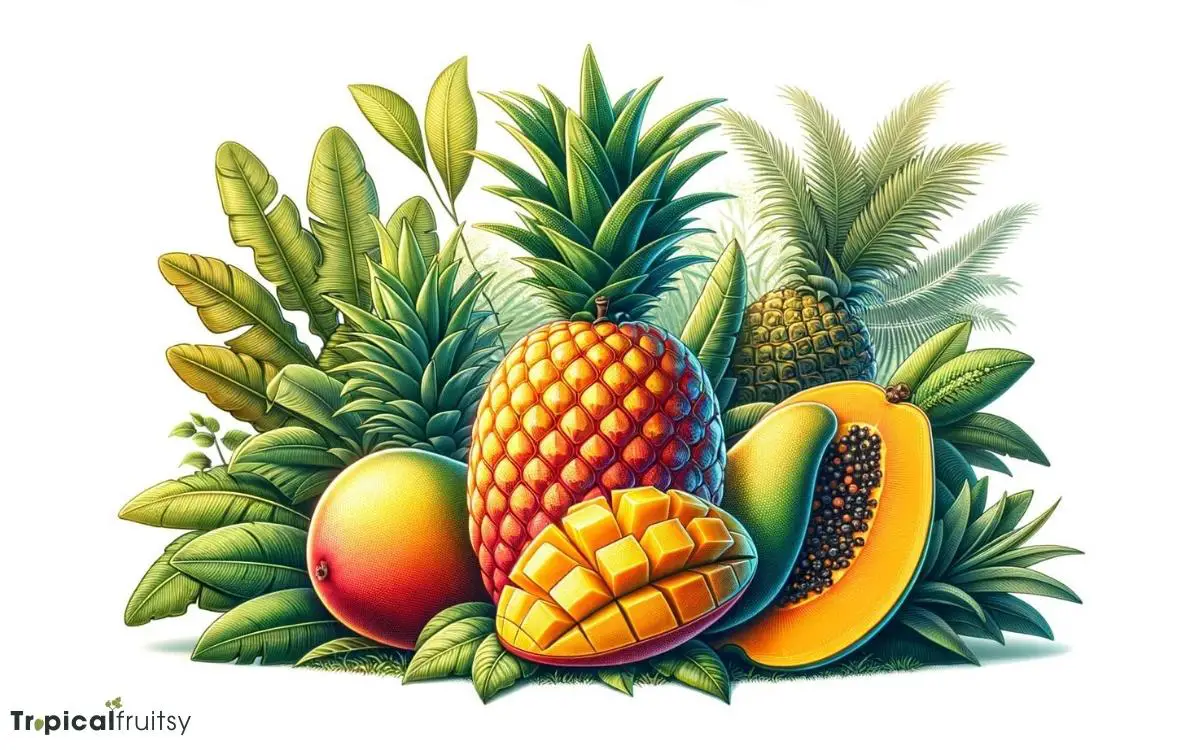
Key Takeaway
Advances in modern agriculture have further expanded the geographical range and adaptability of mango production.
6 Attribute: Is Mango a Tropical Fruit
| Attribute | Description |
|---|---|
| Scientific Name | Mangifera indica |
| Native Region | South Asia |
| Preferred Climate | Tropical and Subtropical |
| Temperature Range | Frost-free, typically above 5°C (41°F) |
| Varieties | Over 500 known types |
| Cultural Significance | Integral to cuisines and traditions in many tropical regions |
Defining Tropical Fruits
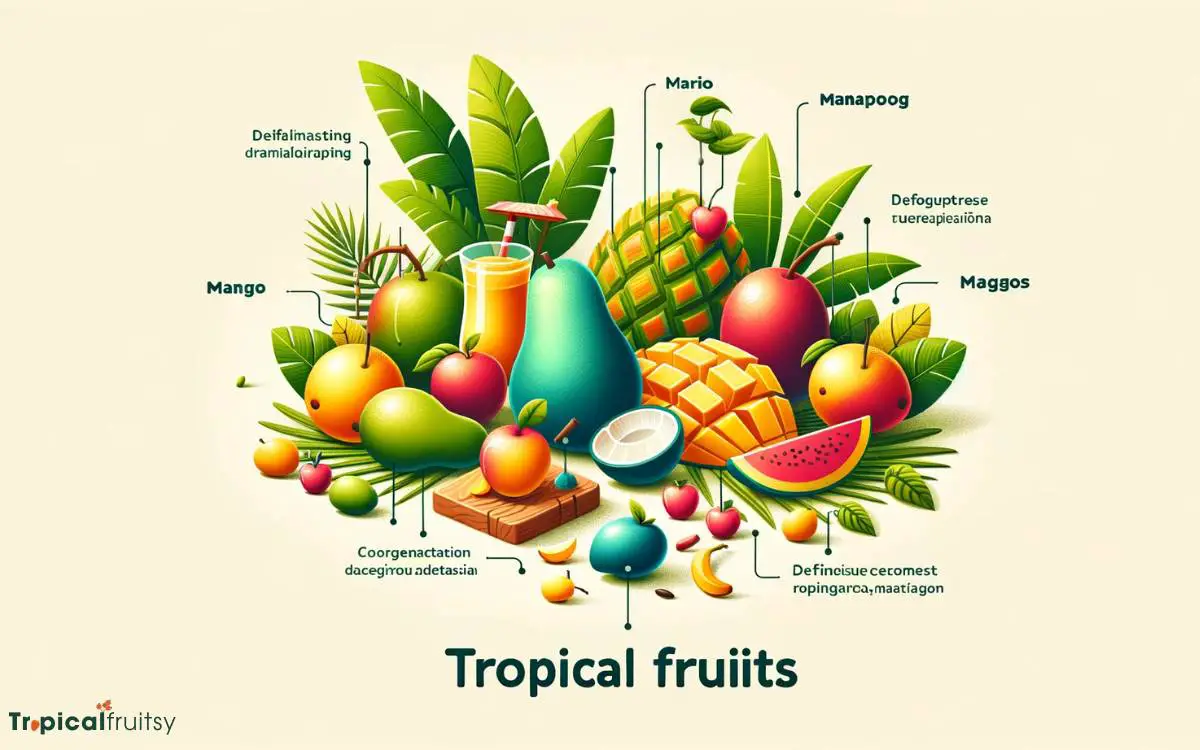
Tropical fruits, characteristic of regions near the Earth’s equator, include a diverse range of produce that thrives in warm, frost-free climates.
These fruits are generally defined by their growth environment rather than botanical features. To flourish, they require a consistent climate with high humidity and ample rainfall, conditions not typically found in temperate zones.
The term ‘tropical fruit’ is utilized within agricultural, commercial, and nutritional contexts to delineate those fruits indigenous to these locales, distinguishing them from temperate fruits.
Mangoes, for instance, which are the focus of this inquiry, epitomize tropical fruits.
They necessitate such specific agro-ecological conditions for optimal growth that they serve as a quintessential example within this category, illustrating the broader characteristics of tropical horticulture.
The Origin of Mangoes
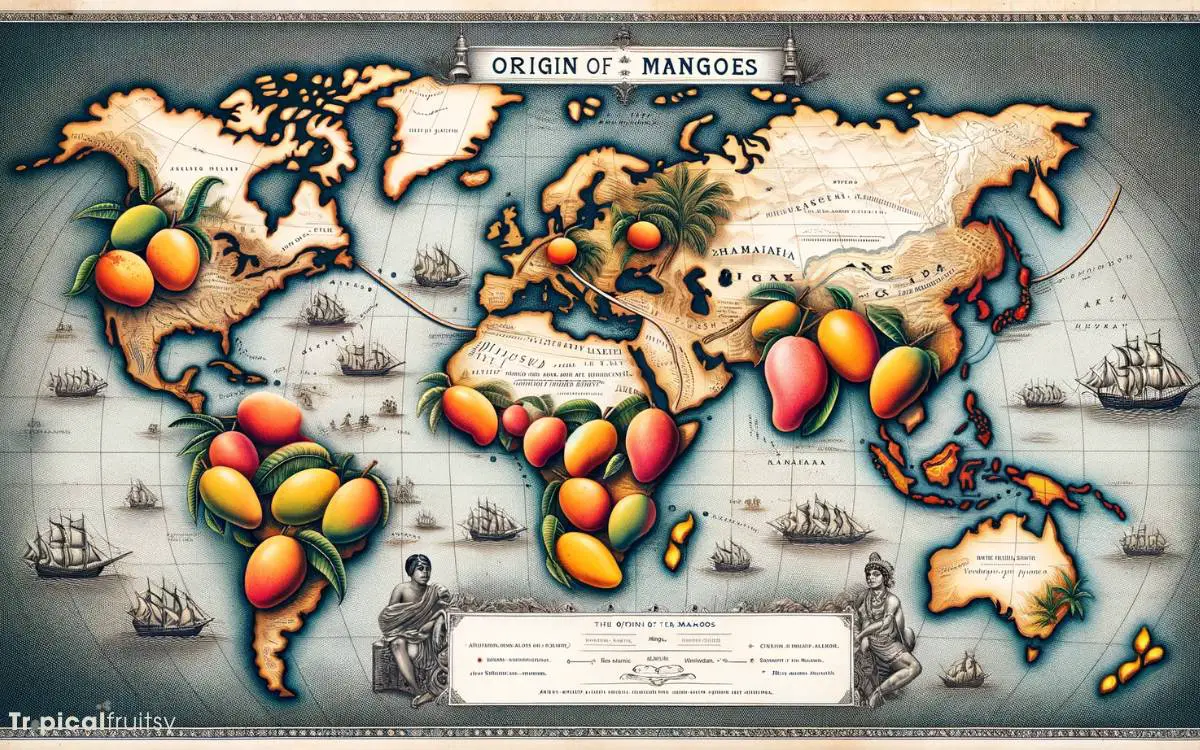
The mango (Mangifera indica) is believed to have originated in the region of South Asia more than 4,000 years ago. It has since become deeply entrenched in the cultural and agricultural landscapes of this region.
Historical records and genetic analyses indicate that the cultivation of mangoes played a significant role in ancient trade. This contributed to their dissemination throughout Asia and beyond.
Subsequent to their initial domestication, mangoes were transported by humans to various tropical and subtropical locales around the world. This has led to their current global distribution.
Mangoes’ Geographic Beginnings
Mangoes, with their origins traced to the Indian subcontinent, are one of the first fruits cultivated over 4,000 years ago.
The domestication of mangoes is a testament to ancient agricultural practices and the fruit’s enduring appeal.
Archaeological evidence and historical texts suggest mangoes were not only consumed but also revered in these early societies.
The mango’s journey from its native land to other regions underscores its adaptability and the human desire to cultivate it across diverse climates.
| Region | Timeframe | Impact on Cultivation |
|---|---|---|
| Indian Subcontinent | >4,000 years ago | Origin & Domestication |
| Southeast Asia | Approx. 2,500 years ago | Early Cultivation Expansion |
| East Africa | 10th Century AD | Introduced by Traders |
| Americas | 19th Century AD | New World Cultivation |
From its South Asian roots, the mango spread to Southeast Asia and East Africa through trade routes. This expansion highlights the fruit’s adaptability to tropical climates and its integration into different agricultural systems.
Ancient Cultivation History
While the domestication of mangoes began in the Indian subcontinent over 4,000 years ago, it laid the groundwork for the fruit’s widespread cultivation in tropical regions around the world.
The ancient cultivation history of mangoes is not just a narrative of agricultural development; it’s a testament to human ingenuity and the shaping of cultural landscapes.
- Mangoes were revered in Vedic texts, symbolizing prosperity and abundance.
- The fruit was a coveted item in the royal menus of ancient kingdoms.
- Botanical expeditions were organized to discover and catalog new varieties.
- Mangoes became integral to religious and ceremonial practices.
- Trade routes expanded, driven by the desire for this exotic fruit.
This meticulous domestication and selective breeding underscored the mango’s journey from its ancestral roots to a globally treasured delicacy. The subsequent section delves into the fruit’s migration and spread.
Migration and Spread
As mangoes gained prominence in ancient societies, their cultivation subsequently spread beyond the Indian subcontinent to other tropical regions.
This migration can be attributed to the expansive trade routes and maritime expeditions that characterized the pre-modern era.
Historical records indicate that the Persians, who were adept at agricultural practices, were pivotal in introducing mangoes to East Africa.
Subsequently, Portuguese explorers and traders played a significant role in the westward expansion of mango cultivation to the Americas and the Caribbean.
The systematic study of botanical adaptability has shown that mangoes thrived in regions with specific climatic conditions, which influenced their proliferation.
This dissemination underscores the fruit’s adaptability and the human role in its global distribution, setting the stage for an exploration of the mango’s climate preferences.
Mangoes and Climate Preferences
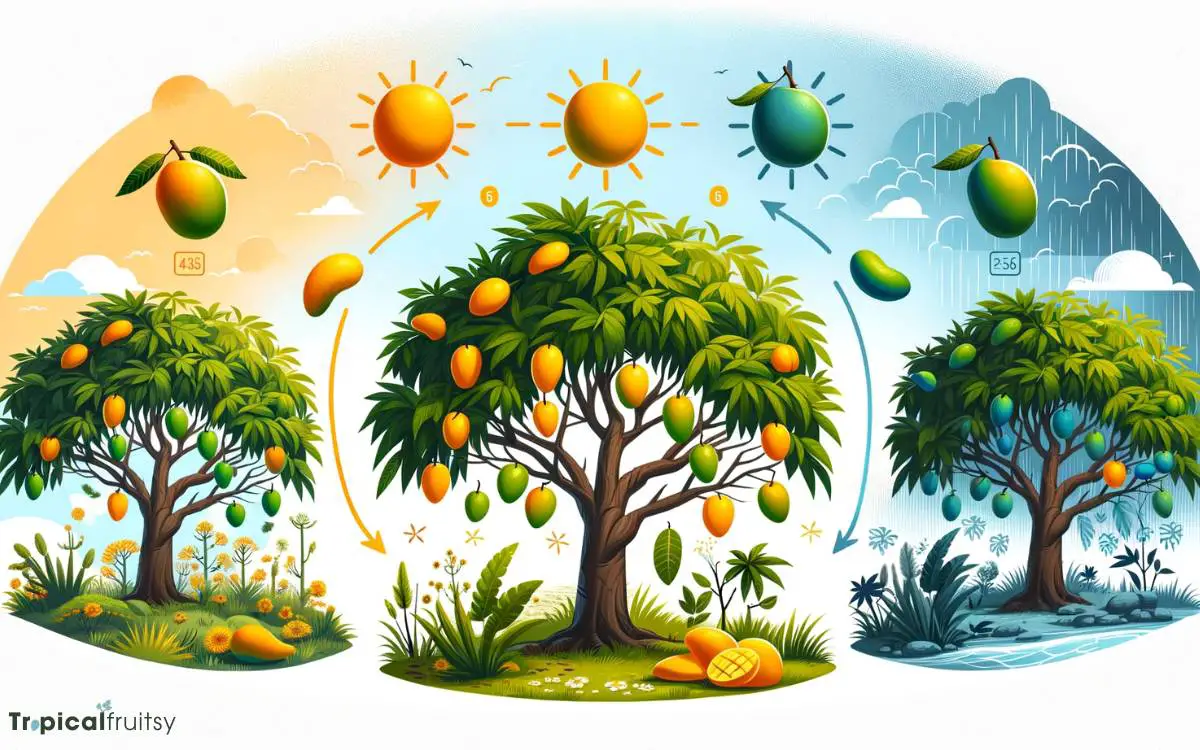
Mangoes exhibit a preference for specific climatic conditions that are instrumental to their growth and fruit production.
Typically, they thrive in regions where the mean temperature ranges between 24°C to 27°C, with a marked sensitivity to temperatures falling below 5°C.
Adequate rainfall, particularly during the flowering and fruit-setting stages, is crucial, and mango orchards require well-distributed annual precipitation between 75 to 250 centimeters to optimize yield.
Optimal Growing Temperatures
Mango trees thrive in regions where the average temperature ranges between 24°C and 27°C, demonstrating their preference for warm, tropical climates. Within this thermal range, mango trees experience optimal growth and fruit production.
Temperatures significantly lower than 24°C can impede growth and adversely affect yield, while temperatures exceeding 27°C, particularly when combined with high humidity, can cause stress to the trees, leading to decreased fruit quality and potential vulnerabilities to diseases.
- Sublime sweetness: Yearning for the succulent, sun-kissed flesh of perfectly ripened mangoes.
- Radiant orchards: Envisioning lush green canopies dancing under a balmy sky.
- Harvest bounty: Anticipating the rich, bountiful harvests that sustain communities.
- Cultural heritage: Cherishing mangoes as a symbol of tradition and tropical splendor.
- Climate guardians: Recognizing the delicate balance between nature and the cultivation of our cherished mangoes.
Rainfall Requirements
Requiring ample rainfall, typically between 75 and 250 centimeters annually, mango trees depend on wet seasons for effective flowering and fruit development.
These precipitation parameters are vital for the cultivar’s climatic adaptation, influencing not only the phenological stages but also the overall health of the tree.
It is during the monsoon period that mangoes undergo a rigorous growth phase, necessitating consistent moisture levels to sustain the metabolic processes requisite for fruit maturation.
Deviation from these rainfall prerequisites can lead to suboptimal yields and increased susceptibility to diseases.
Thus, agronomists must monitor climatic conditions, ensuring that irrigation practices are adjusted in water-deficient areas to simulate natural precipitation patterns.
This strategic intervention enables a controlled environment for mango production, mitigating the risks associated with irregular rainfall.
Global Cultivation of Mangoes
We observe that the cultivation of mangoes has become a significant agricultural activity in numerous tropical and subtropical regions worldwide.
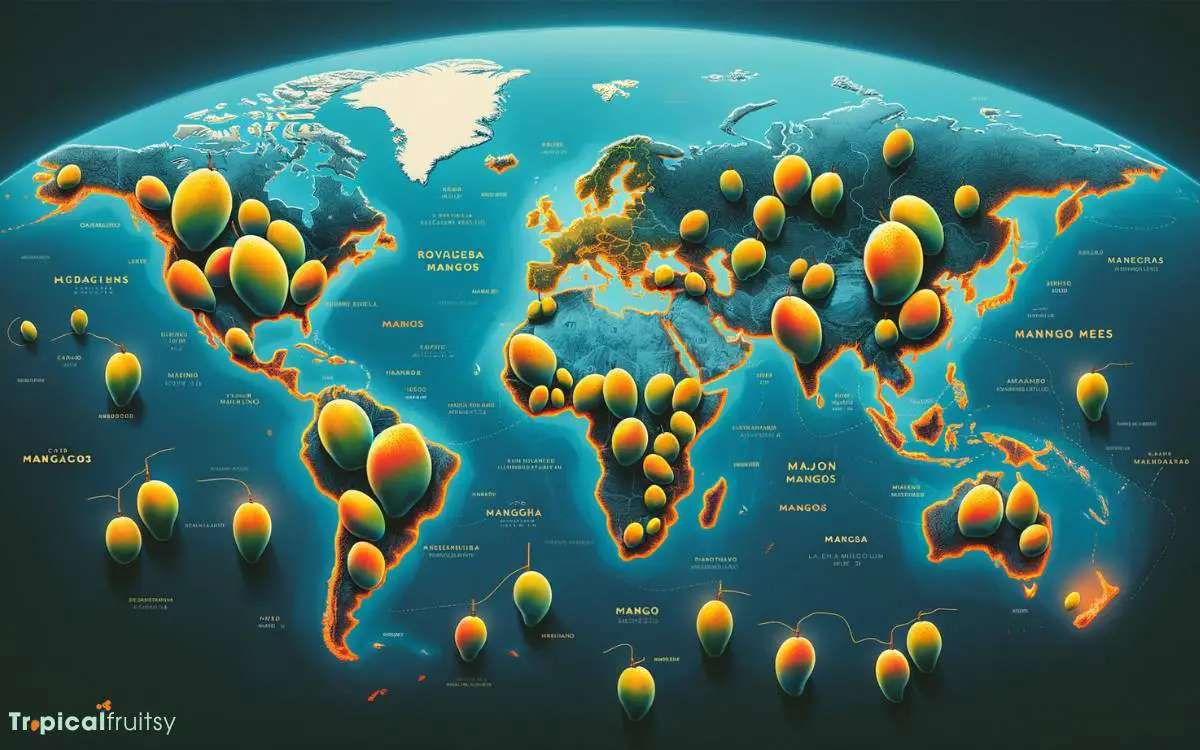
This fruit not only thrives in warm climates but also serves as an economic backbone for many communities, providing both subsistence and commercial opportunities.
Analyzing the global cultivation patterns, we find:
- India stands as the largest producer, with a rich diversity of cultivars.
- China and Thailand are rapidly expanding their mango industries.
- Brazil contributes significantly to the South American mango output.
- Africa, with countries like Kenya and Egypt, is emerging as a vital player in the international market.
- The United States, primarily Florida and California, focuses on niche varieties catering to a premium market segment.
Each point illustrates the geographical spread and economic impact of mango cultivation, reflecting its global significance.
Mango Varieties Around the World
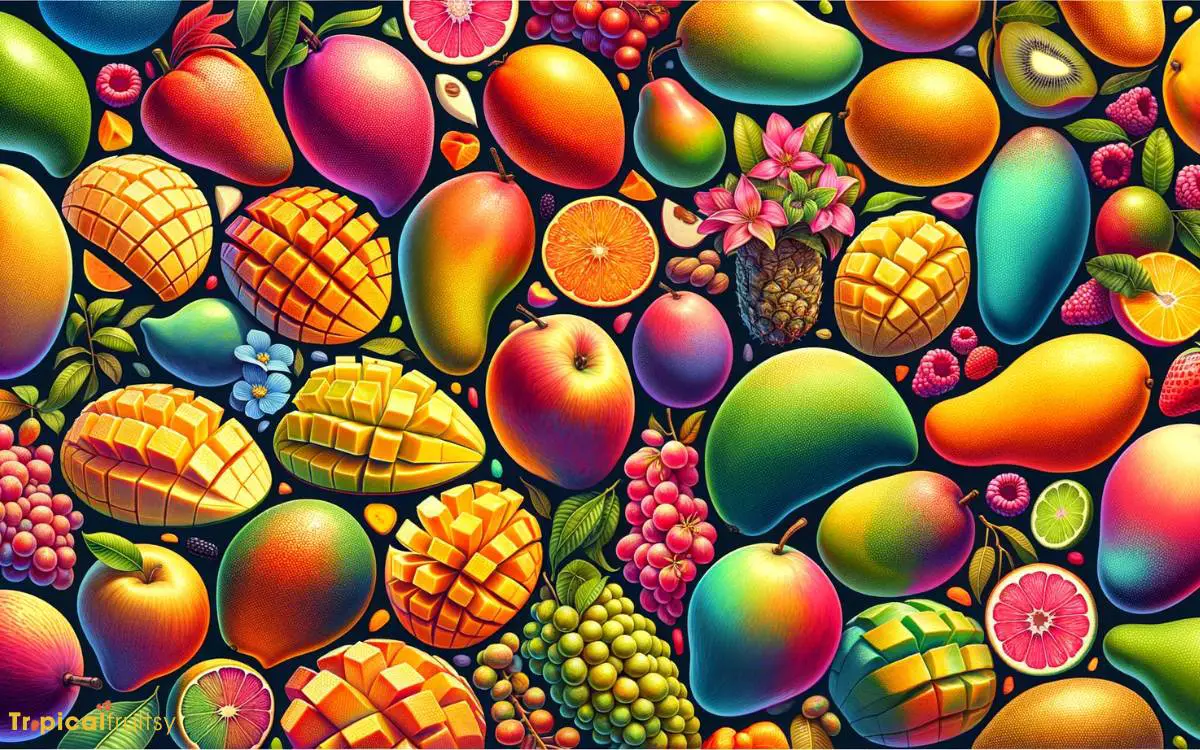
Diverse climates across the globe have given rise to a remarkable array of mango varieties, each with unique flavors, textures, and uses.
In India, the ‘Alphonso’ is renowned for its rich, creamy taste and is often considered the king of mangoes.
The ‘Carabao’ or ‘Manila’ mango from the Philippines is distinguished by its elongated shape and sweet, buttery flesh.
Latin America’s ‘Ataulfo’, also known as the ‘Honey’ mango, is prized for its smooth texture and high sugar content.
The ‘Tommy Atkins’ variety, predominant in the U.S. market, is valued for its long shelf life and disease resistance, despite a firmer, less sweet flesh.
These varietals exemplify the extensive horticultural efforts to optimize mango cultivars for regional preferences and agronomic conditions.
Cultural Significance of Mangoes
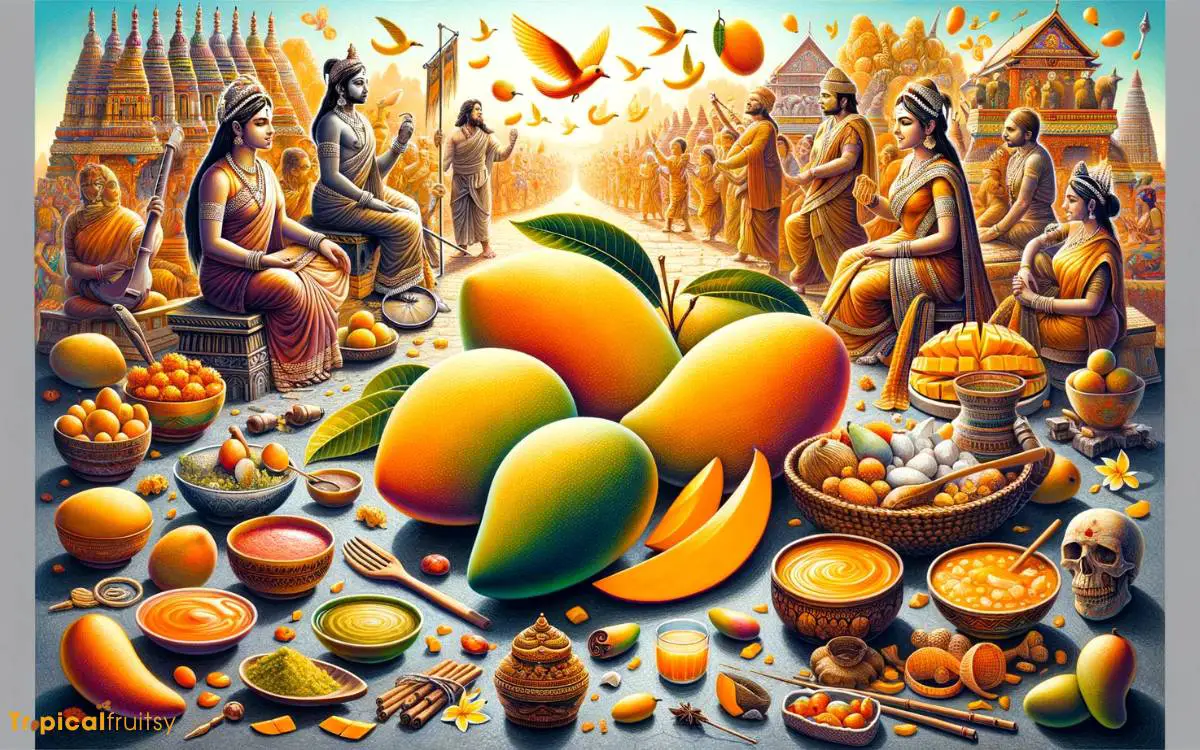
Beyond its status as a delicious treat, the mango holds deep cultural significance in various societies around the world.
Revered for its luscious taste and nutritional value, this fruit transcends mere alimentary appreciation, embedding itself in the social and religious fabric of many regions.
Its cultural imprint is profound, symbolizing wealth, fertility, and even philosophical ideals.
To analyze the gravity of mangoes in cultural contexts, consider the following emblematic representations:
- Symbol of Love and Fertility: In Hinduism, mangoes are often associated with the god of love, Kamadeva.
- National Fruit: Mango is the national fruit of India, Pakistan, and the Philippines, underscoring its intrinsic value.
- Historical Trade: Mango cultivation has intertwined with historical trade routes, spreading its influence globally.
- Religious Offerings: Mangoes are used in various religious rituals and festivals as sacred offerings.
- Literary Metaphors: The fruit frequently appears in poetry and literature as a metaphor for sensuality and richness.
This analytical inspection reveals the mango’s multifaceted role, extending far beyond its tropical origin to shape cultural identities and customs.
Mangoes in Modern Agriculture
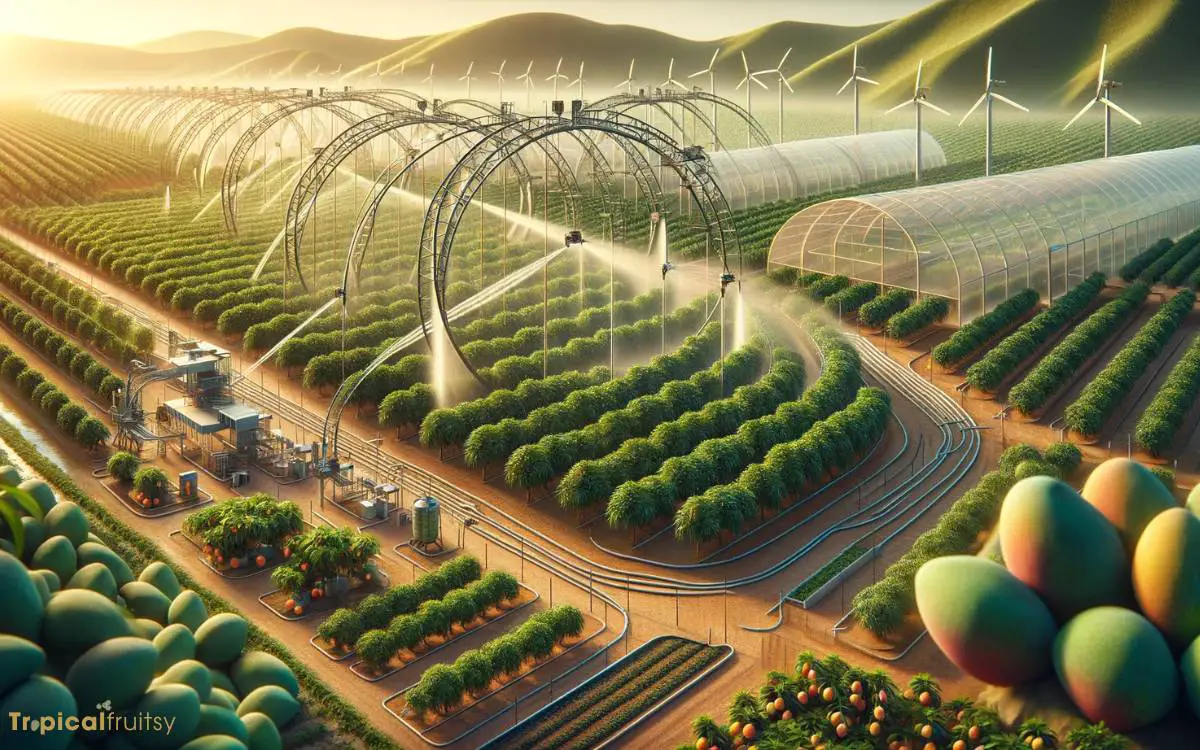
While mangoes have been historically grown in tropical climates, advances in modern agriculture have enabled their cultivation in some subtropical regions as well.
Through the implementation of innovative techniques such as controlled microclimates, growers can manipulate environmental factors to extend the geographical range of mango production.
This includes the use of greenhouses, shade nets, windbreaks, and irrigation systems that mitigate temperature extremes and provide adequate moisture levels, essential for mango growth.
Plant breeding and genetic modification have also played a pivotal role. By developing cold-tolerant and disease-resistant cultivars, agricultural scientists have successfully expanded the potential growing areas.
Furthermore, precise nutrient management and pest control strategies are employed to enhance yield and fruit quality. As a result, mango cultivation has become a more versatile and adaptive component of modern horticulture.
Conclusion
Mangoes, with their rich history and widespread cultivation, stand as a quintessential example of tropical horticulture.
Their diverse varieties grace various regions, contributing not only to agricultural diversity but also to cultural tapestries worldwide.
The integration of mangoes into modern agricultural practices underscores their economic and nutritional significance.
As such, this delightful stone fruit continues to flourish, offering a symphony of flavors that echoes the essence of tropical abundance.



